Design meets tradition: Walking from Harajuku to Ebisu
For any visitor - be it your first time or not - deviating from the main tourist strip is a sure way to discover another side of the country. And, so it is with Tokyo, the city that never seems to rest. There is lots to see and do regardless of day or weather, and perhaps the major concern for some might be the crowd levels at popular sightseeing attractions.
I spent a day out in central Tokyo visiting Harajuku and Ebisu, two Tokyo neighbourhoods just five minutes apart on the JR Yamanote Line. It is far more interesting to walk between the two neighbourhoods as it would allow visitors to escape some of the busiest spots and discover some pockets of the past. That was exactly what I did.
Starting in Harajuku, I walked the streets parallel to the crowded Takeshita Street, then continued down more side streets, where the human traffic was comparatively sparse in contrast to the main ones. Midway through, my self-guided tour turned into an art and architecture stroll. Finally, my day ended in Ebisu, where I enjoyed local beer and watched the twinkling lights of the city from above.
Some practical information for those who are planning to do the same walk: give yourself around 8-9 hours to complete this itinerary, and budget at least 7000 yen for museum admission fees and meals. Walking is, thankfully, free, and there is no need to consider fares ;)
Start: Harajuku
For a long time, Harajuku was synonymous with youth sub-culture and fashion. Young fashionistas, dressed up in the latest trends, would gather in Harajuku with their like-minded friends. There were plenty of independent labels and shops catering to that demographic. Takeshita Dori or Takeshita Street is the main fashion street in Harajuku, and one of Tokyo's most well-known and well-visited tourist attractions.
If you must check off Harajuku, but are not fan of crowds, then exploring the side streets like Brahms and Mozart streets would be the perfect solution. I started at the top of Takeshita Dori near Harajuku Station and headed into the side streets, where foot traffic was less than a tenth of the main street. I wandered past local establishments and indie shops, unlike on Takeshita Dori, which felt like it had more commercial, trendy and chain shops.
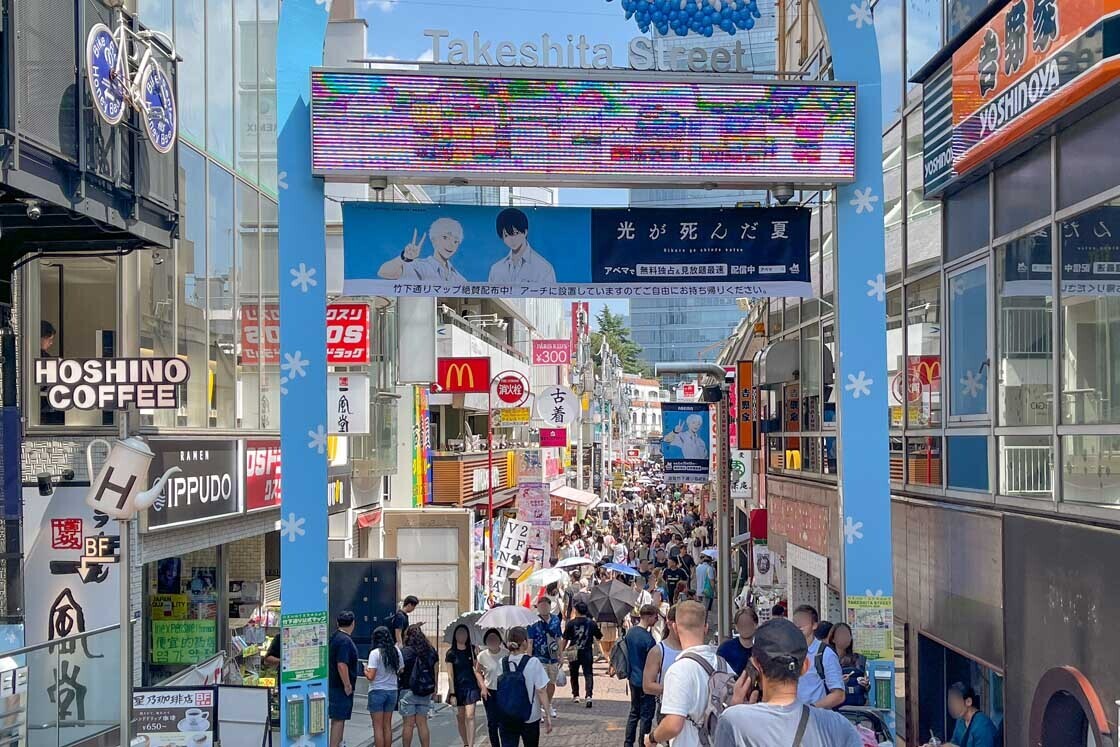
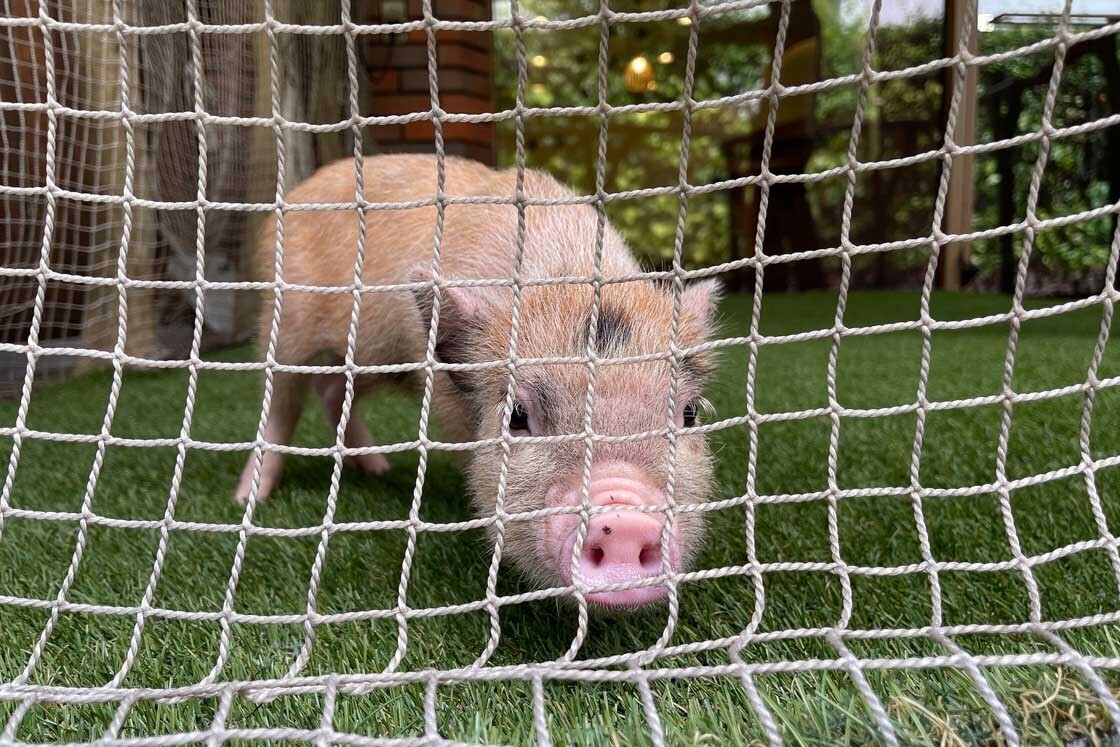
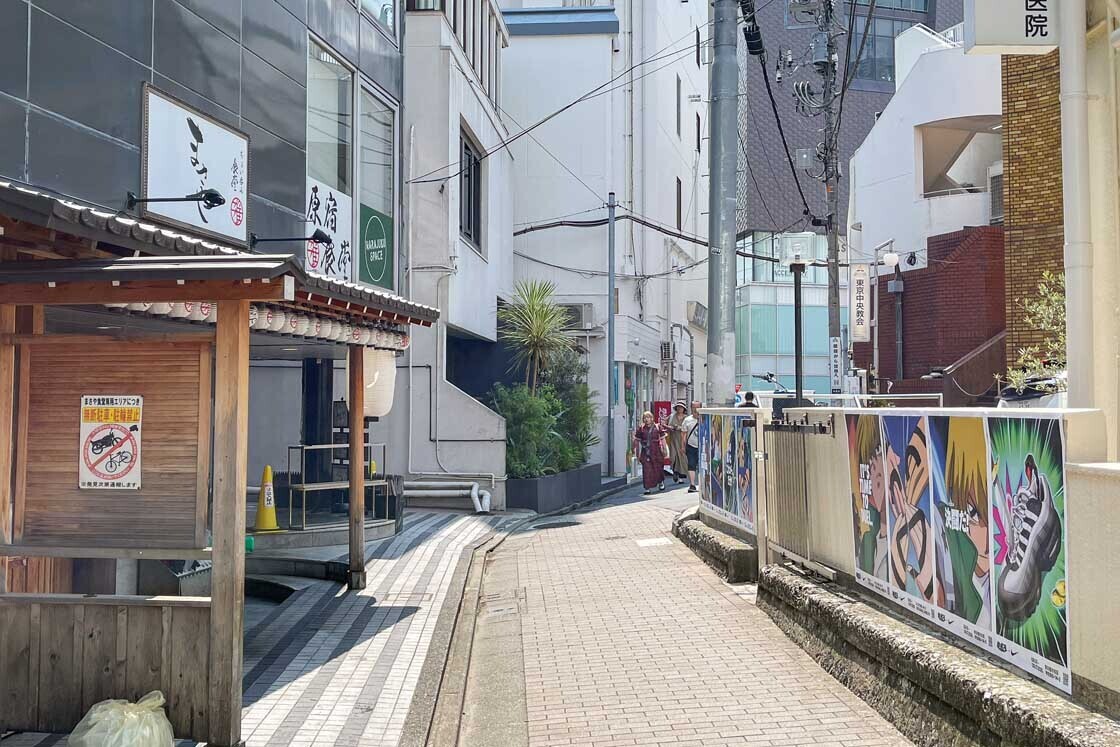
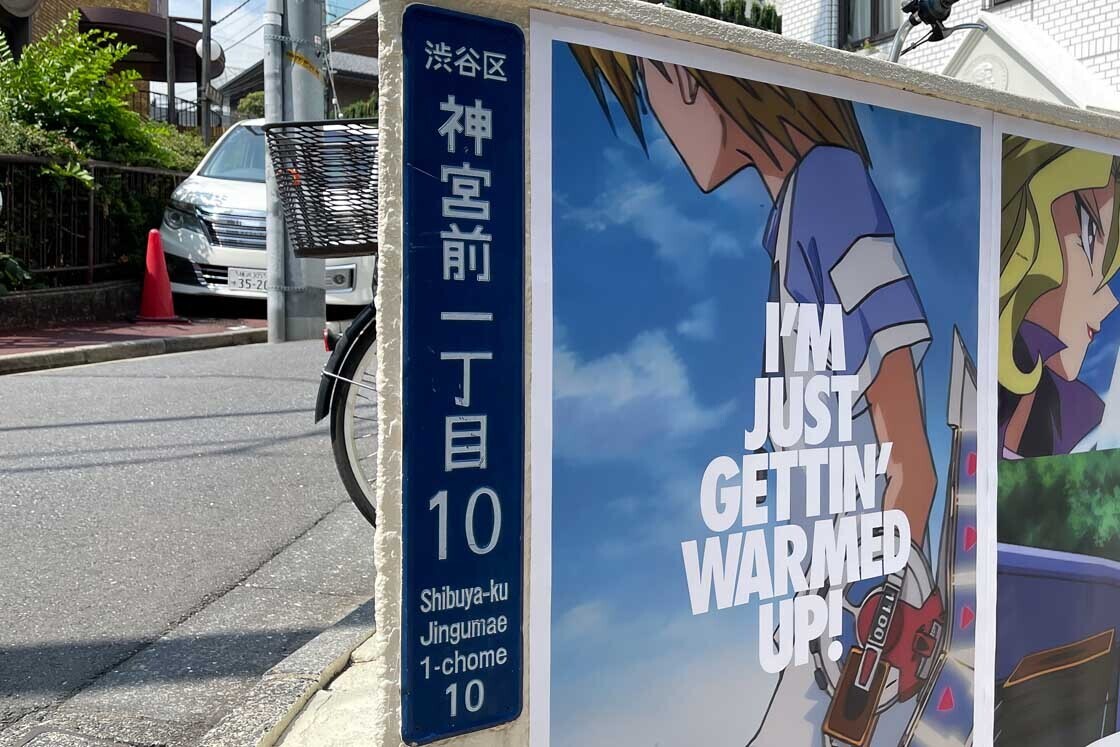
Ukiyo-e interval at Ota Memorial Museum of Art
Just a stone's throw from the end of Mozart Street, a side street parallel to Takeshita Dori, is the Ota Memorial Museum of Art. The museum specializes in ukiyo-e or Japanese woodblock print, an art style developed in the Edo Period (1603-1868). The most famous ukiyo-e artist is Hokusai, whose works include The Great Wave off Kanagawa and Red Fuji (South Wind, Clear Sky).
Harajuku may feel like a mismatched location for a traditional woodblock print museum, but anyone and everyone can get inspired looking at art, especially in an area known for its creativity. Monthly exhibitions display selected pieces from the 15,000-piece strong collection, and each theme offers insights and hints of everyday life back in the day. Visitors can take a respite from the present and get to know the past.
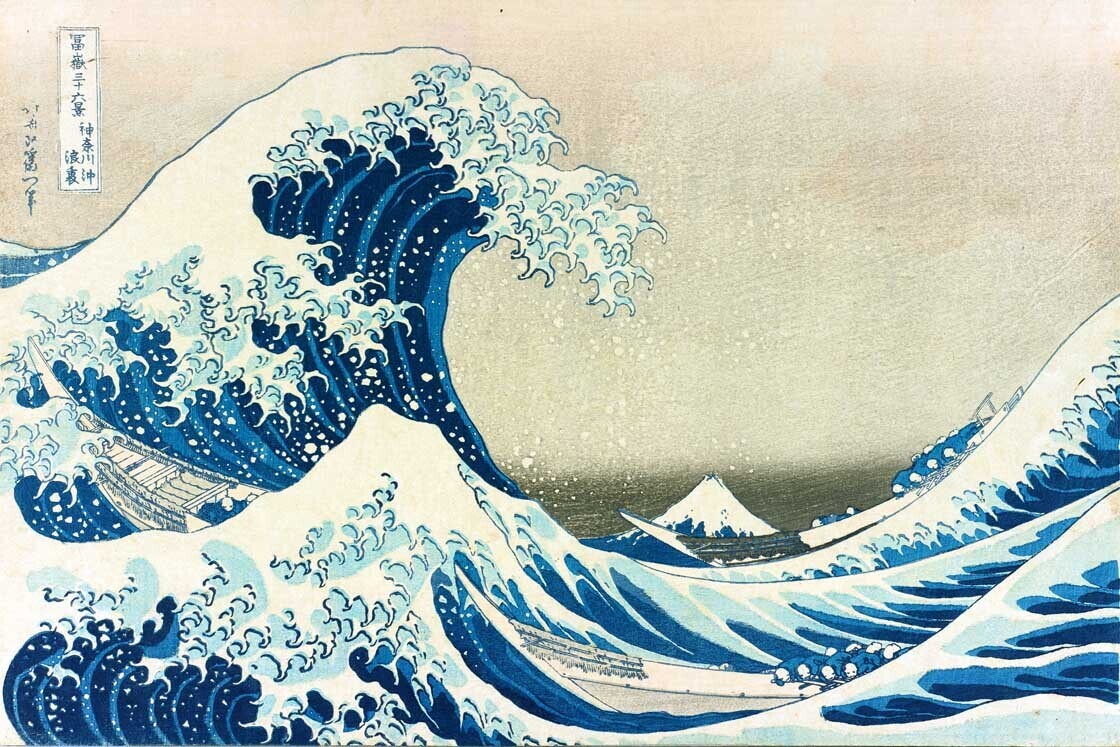
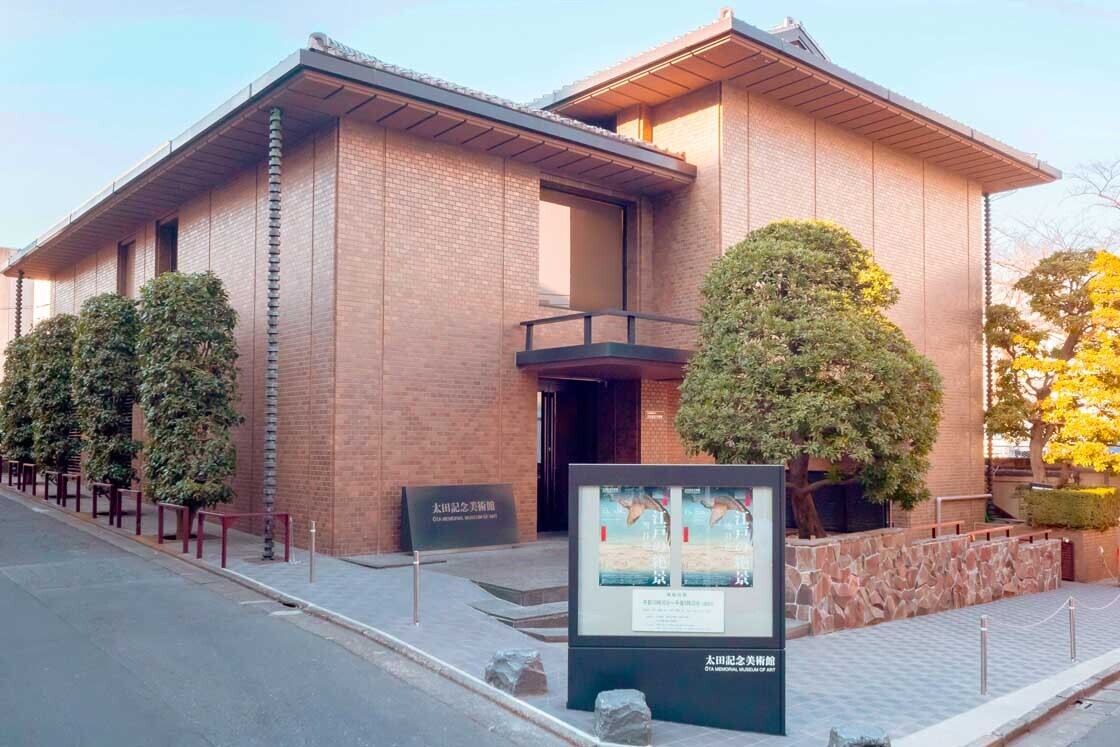
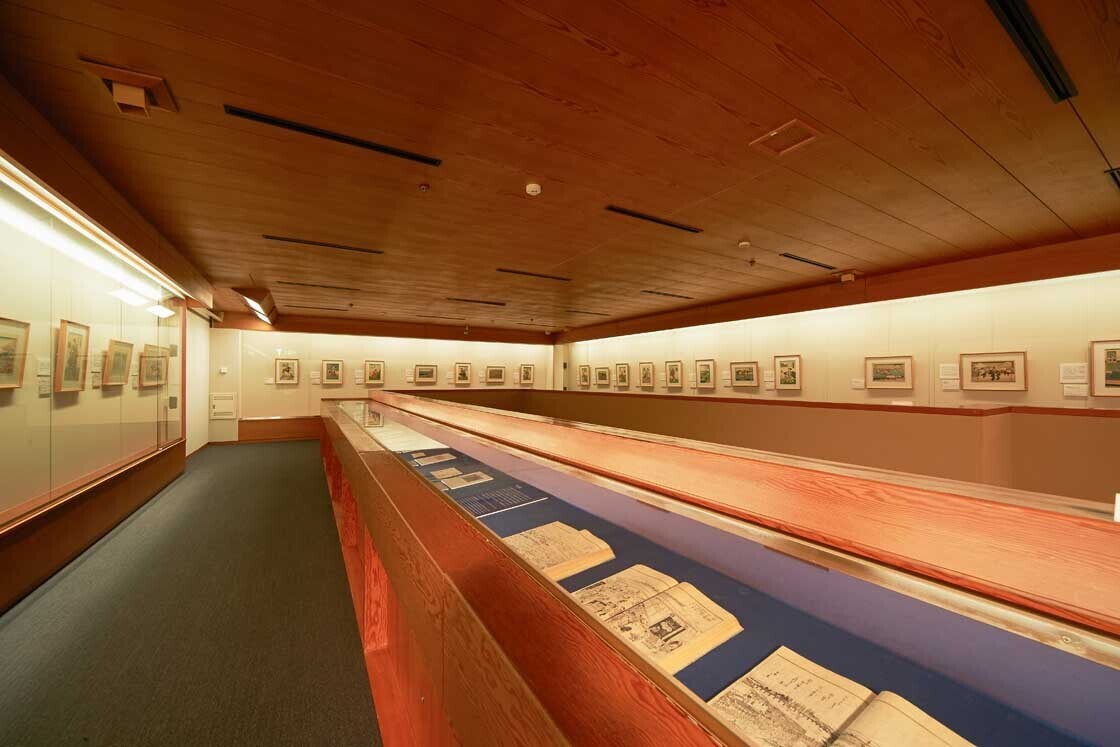
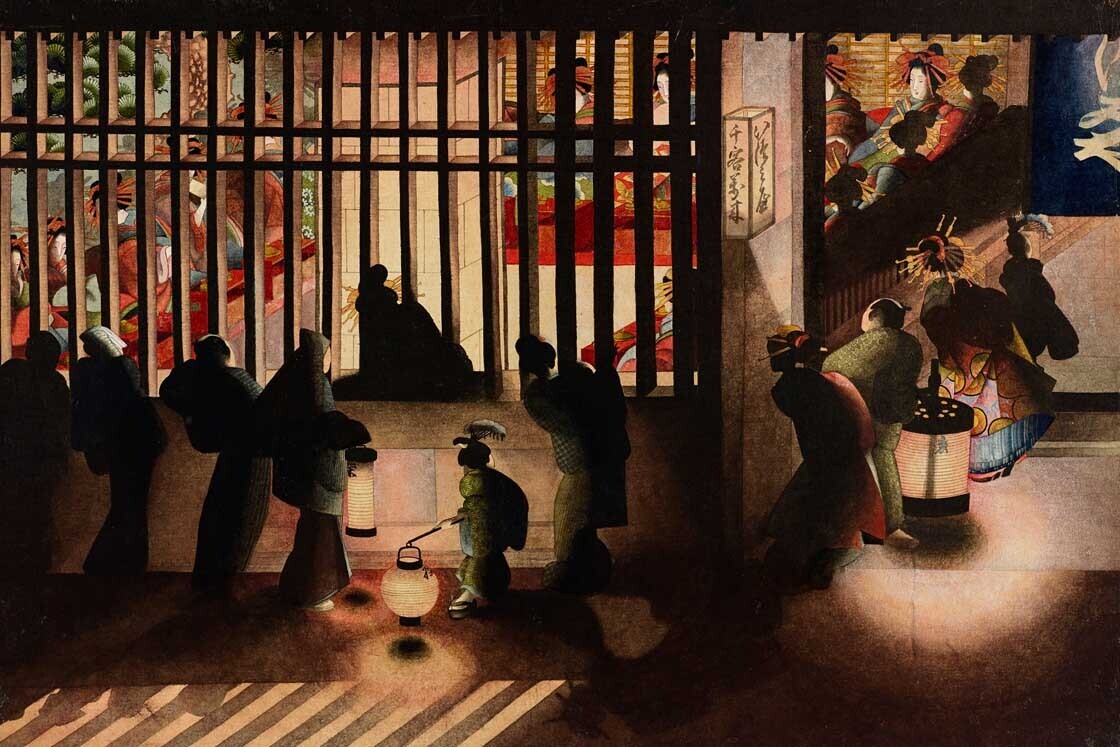
Lunch at Sakura Tei
Lunch was next, and I headed into the back streets of Harajuku also known as Ura-Hara. Wandering through the narrow back streets, I chanced upon the Design Festa Gallery. Design Festa is an annual international art event that showcases independent artists, and the gallery in Harajuku is a permanent space where artists can exhibit their works.
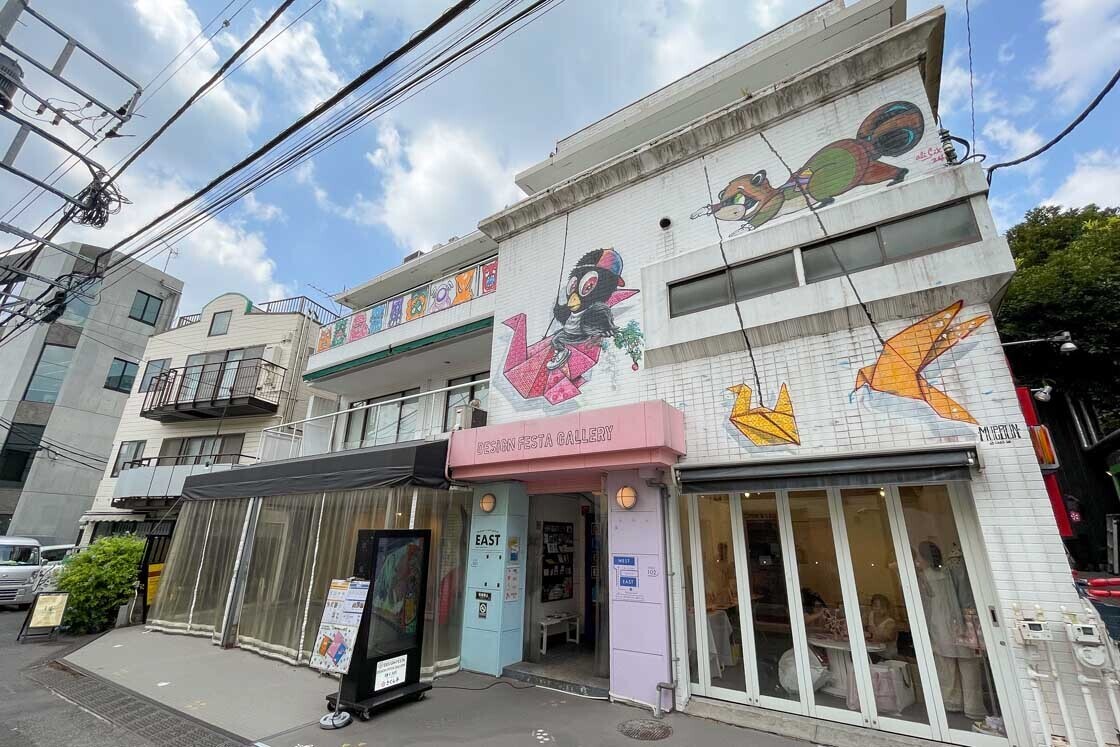
In and amongst all the art space is Harajuku Sakura Tei, a former residential home turned restaurant with funky murals embracing its Harajuku design-art environment. On the menu are okonomiyaki, a "pancake" consisting of cabbage, thin batter, meat and an egg, as well as monjayaki, which is similar to okonomiyaki but with more batter to make it runny. Either one is cooked at the table by the diner. Sakura Tei's menu also caters to vegetarians and vegans, and there are gluten-free alternatives as well. There is an option for everyone at the same table.
Okonomiyaki is the more famous of the two dishes, but monjayaki is a Tokyo local specialty not to be missed. It is said that monjayaki was a dish born from the period of scarcity. The dish was originally a thin batter made of flour and water, grilled on a hot plate, and eaten with soy sauce and/or syrup. As the economy got better, more ingredients were added to the dish, and monjayaki has remained as a beloved local dish.
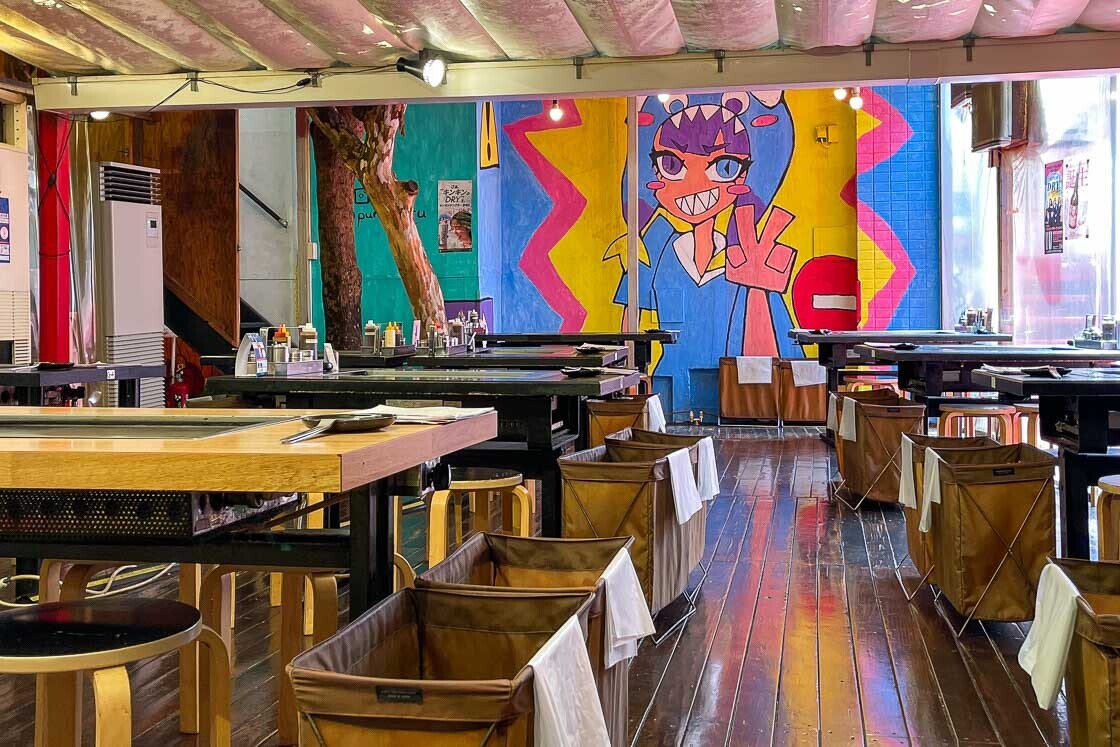
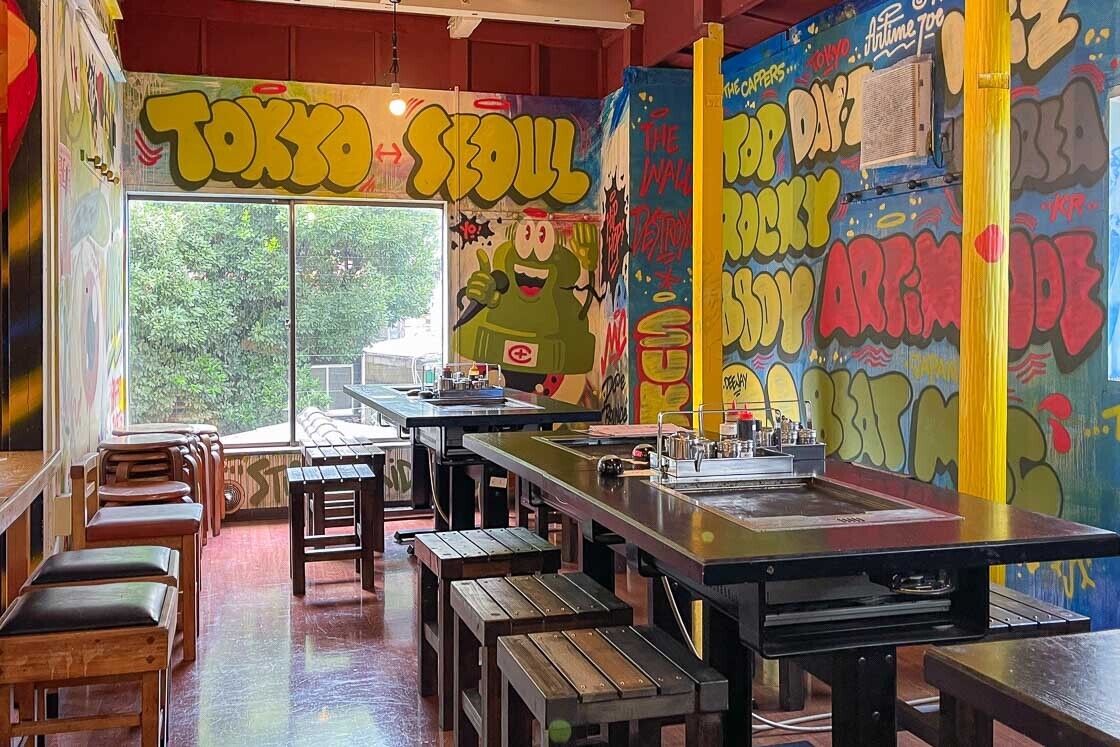
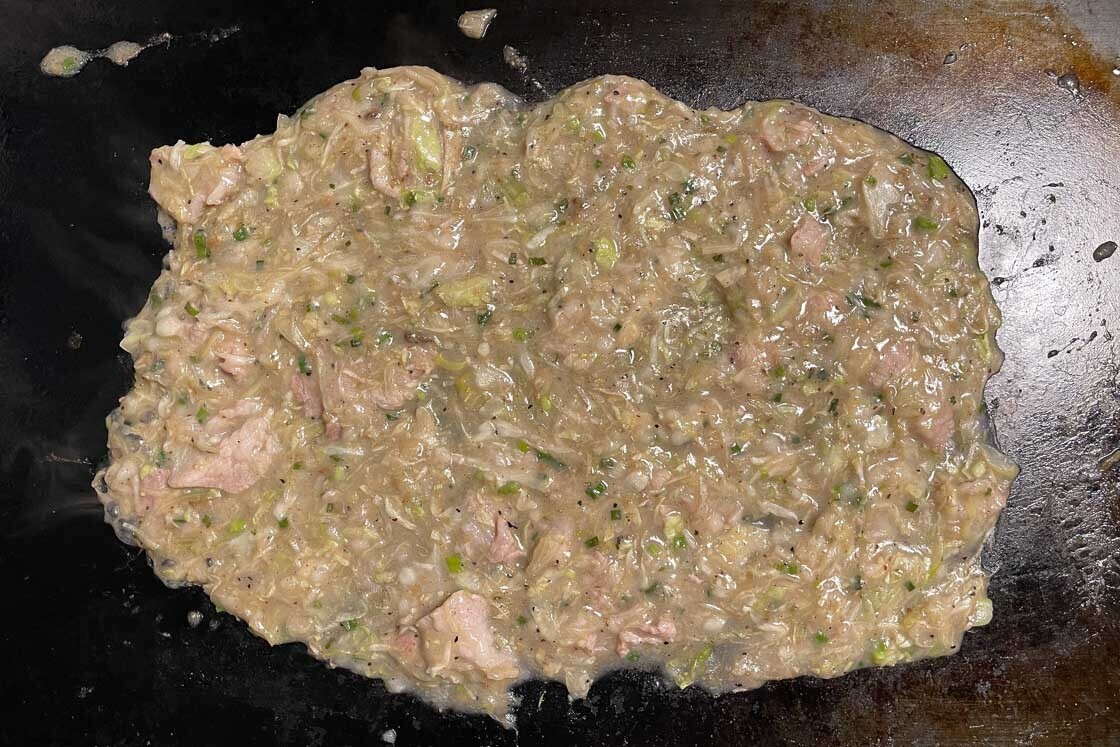
Walking in Omotesando and Aoyama
After lunch, I headed back out into Cat Street that connects Harajuku with Shibuya. The street is known for its small fashion boutiques, art museums and indie shops, a welcome change from the big brand and chain stores along the main streets. Little known amongst many travelers is that Cat Street is built over the Shibuya River, and the gentle curves of the street follow the course of the meandering river.
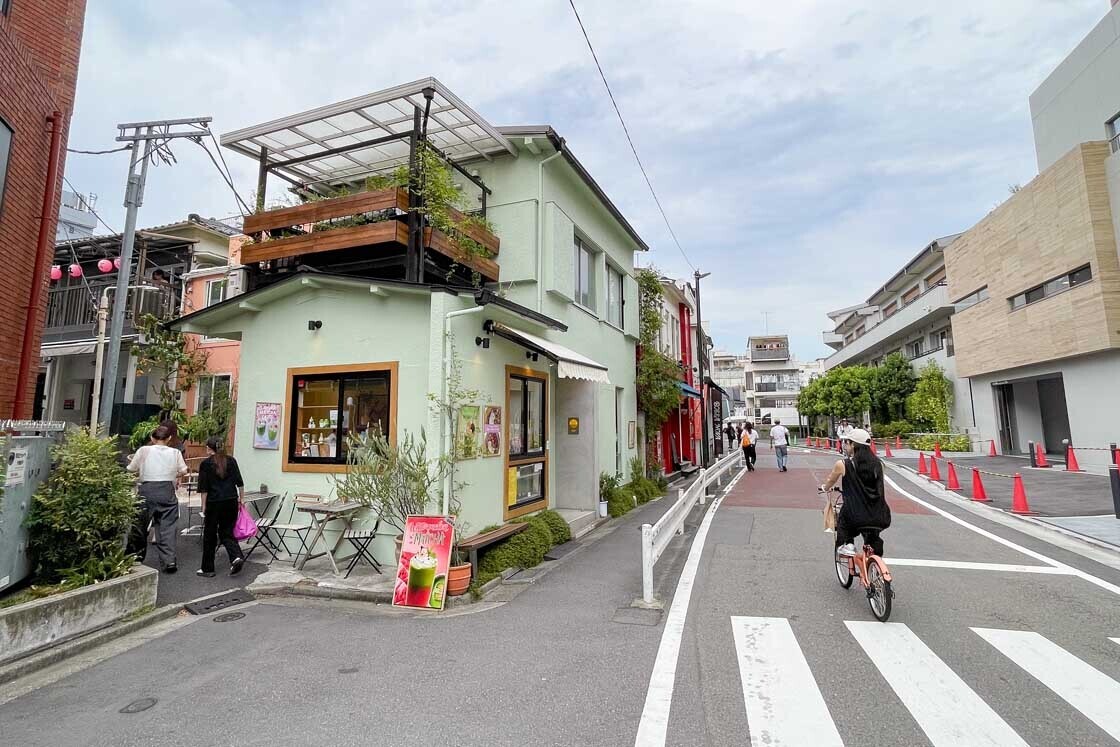
Instead of walking all the way to Shibuya, I stayed on the Harajuku side, and made my way to the intersection where Meiji Street meets Omotesando - Tokyo's Champs-Elysees as the street is lined by mostly high-end boutiques. At the busy intersection is Tokyu Plaza Harajuku Harakado, a mall that opened in 2024.
Back in the 60s, this area was home to the Harajuku Central Apartments, a gathering place for artists and designers. Today, Harakado keeps the artistic spirit alive with its quirky shops and creative spaces. One nice feature is its rooftop terrace that provides a nice space for rest and enjoying a view of the busy intersection below.
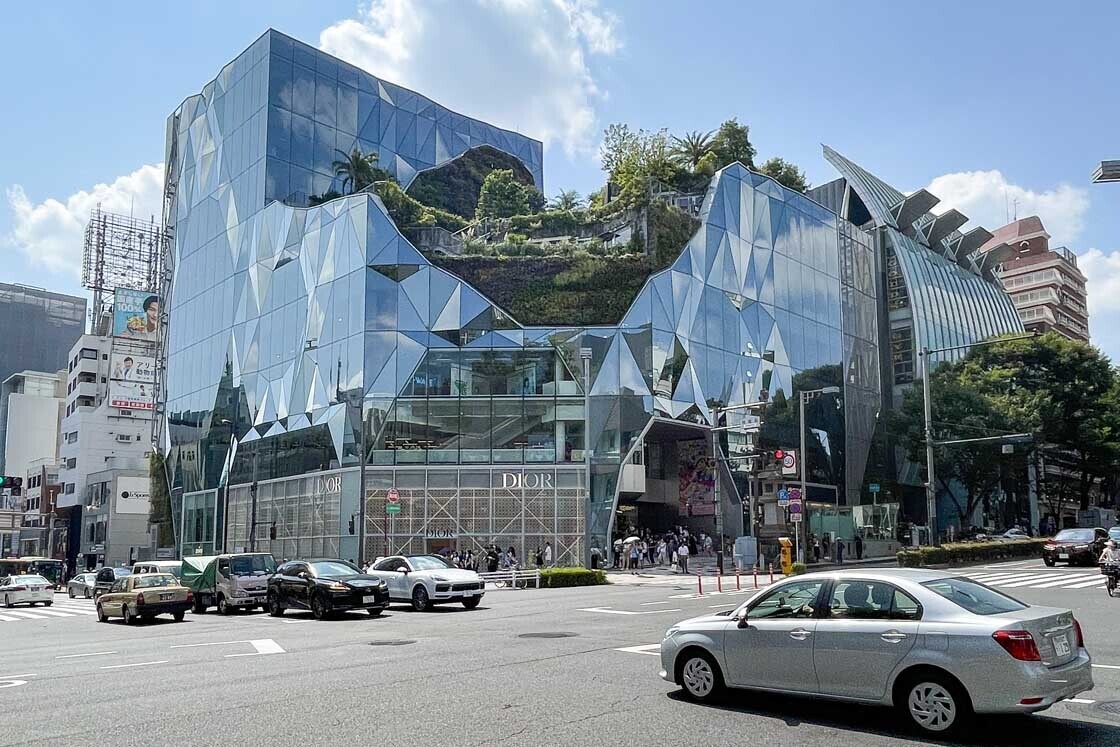
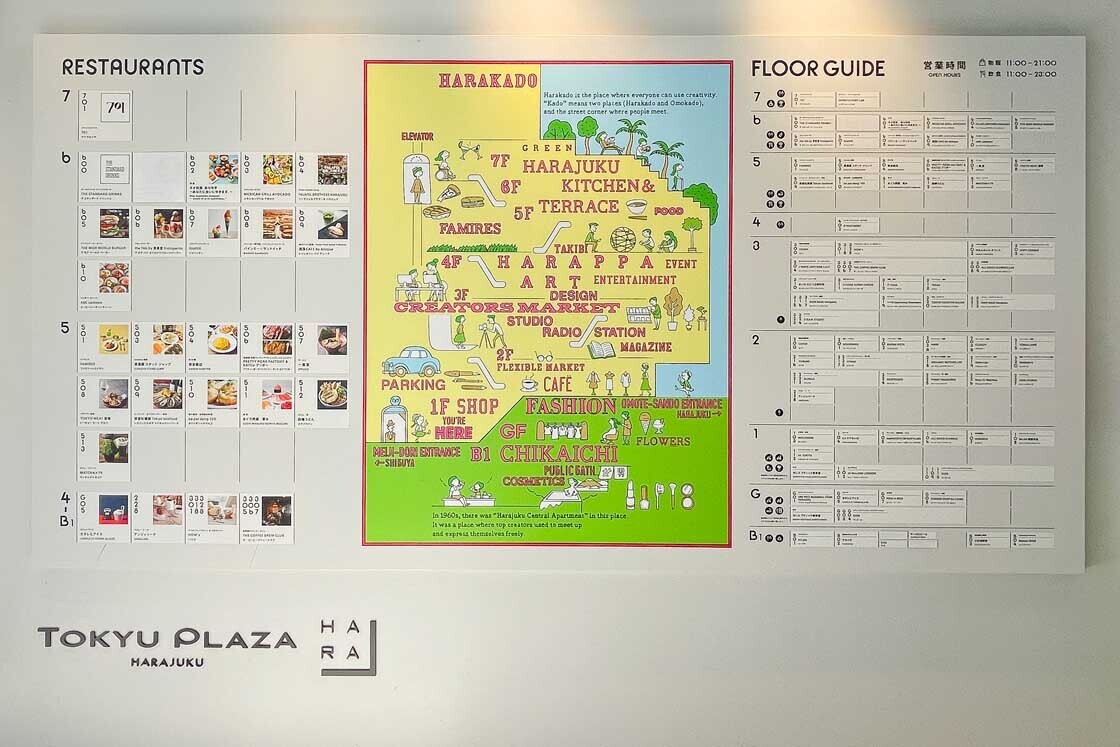
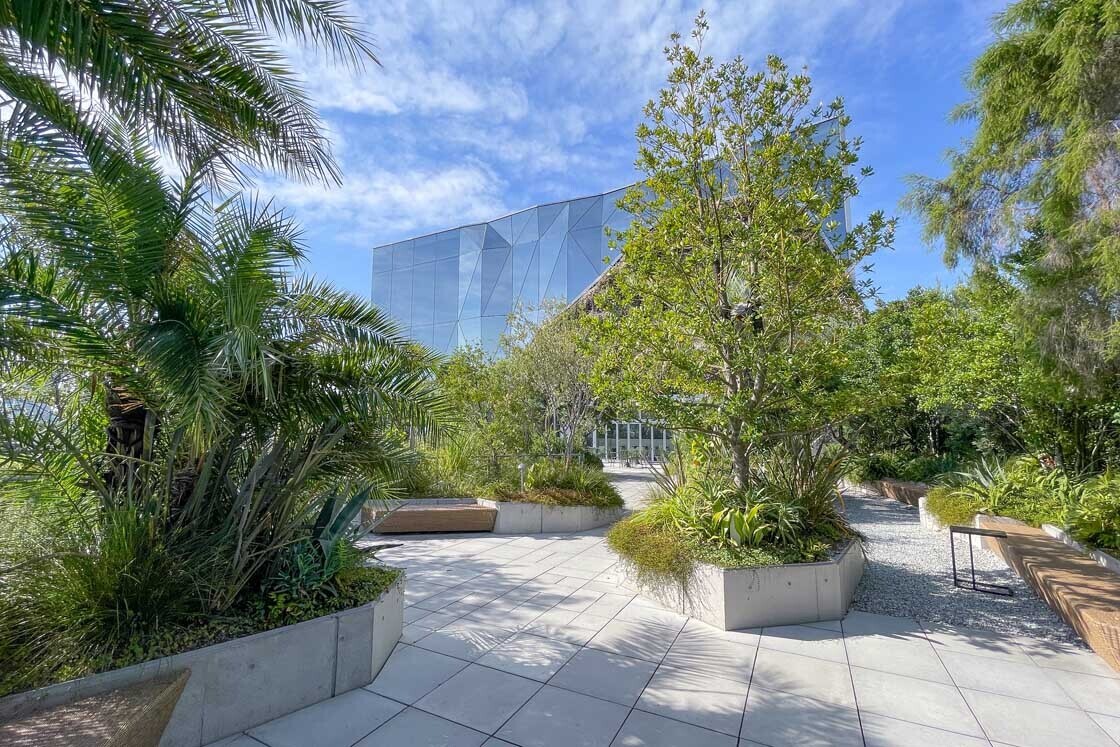
I took some time at the terrace to plot my following route, and got started on my mini architecture stroll in central Tokyo. Personally, the one thing - aside from seeing tall skyscrapers - that makes walking in a city interesting and fun is seeing the differently designed buildings that make up the urban landscape.
Tokyo has many buildings designed by renowned Japanese and international architects. Luckily for me there are a fair number along my walk through Omotesando and Aoyama, another upscale neighbourhood.
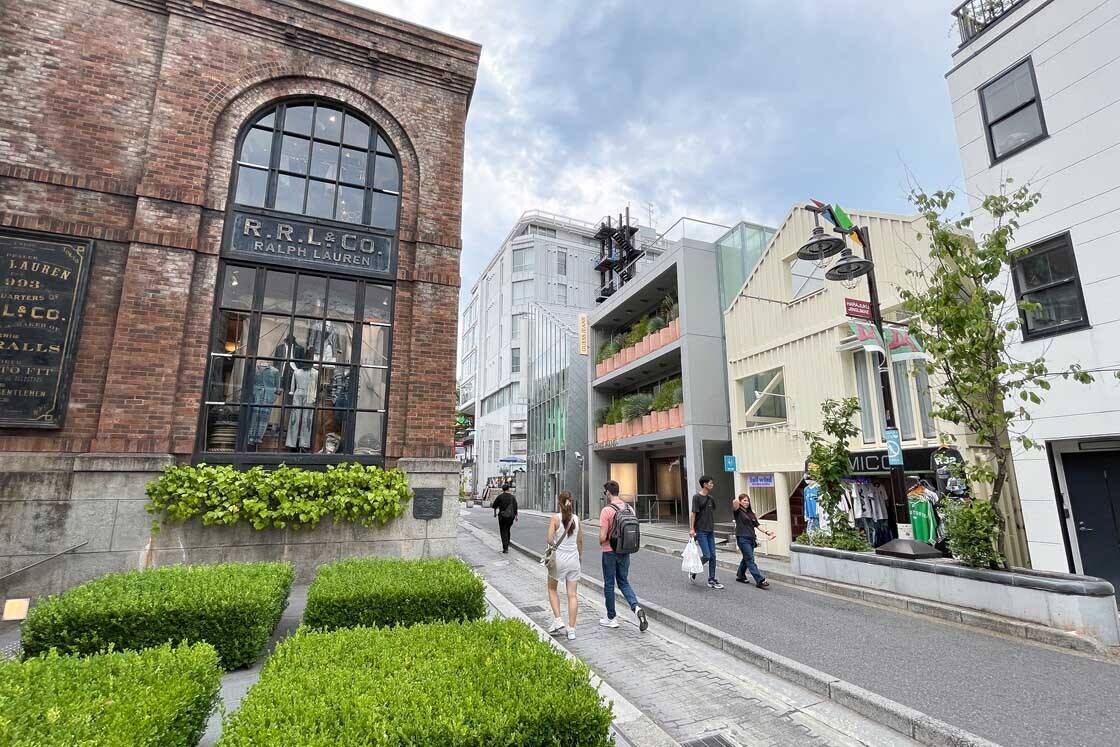
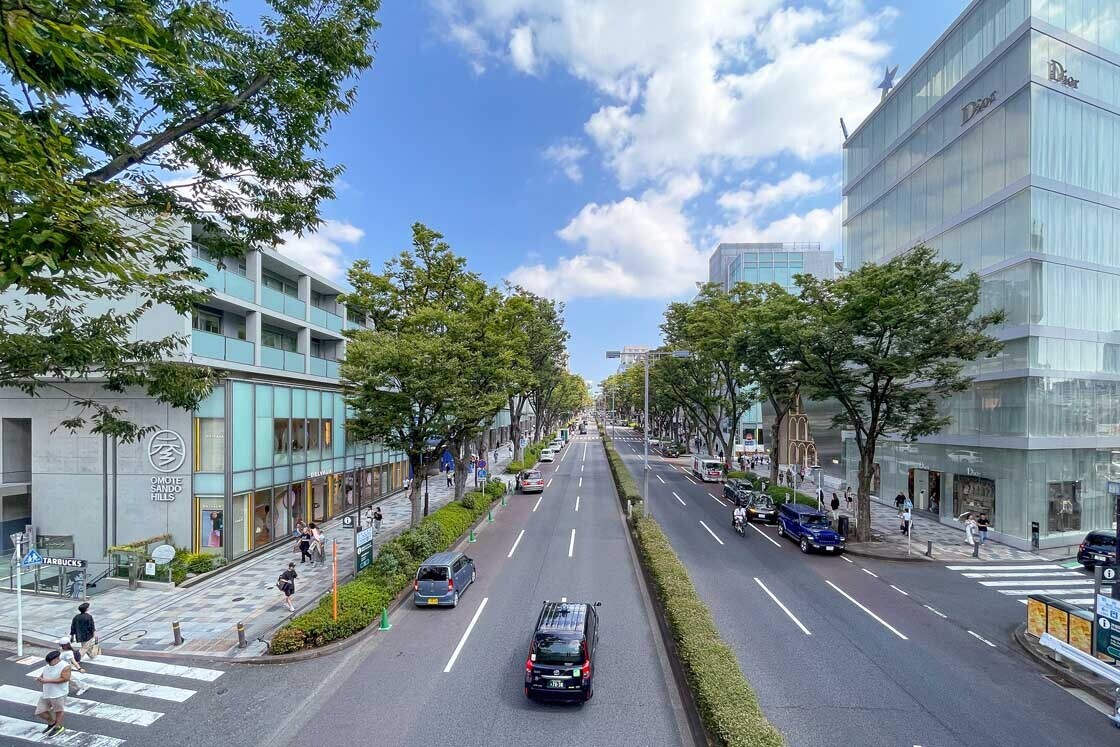
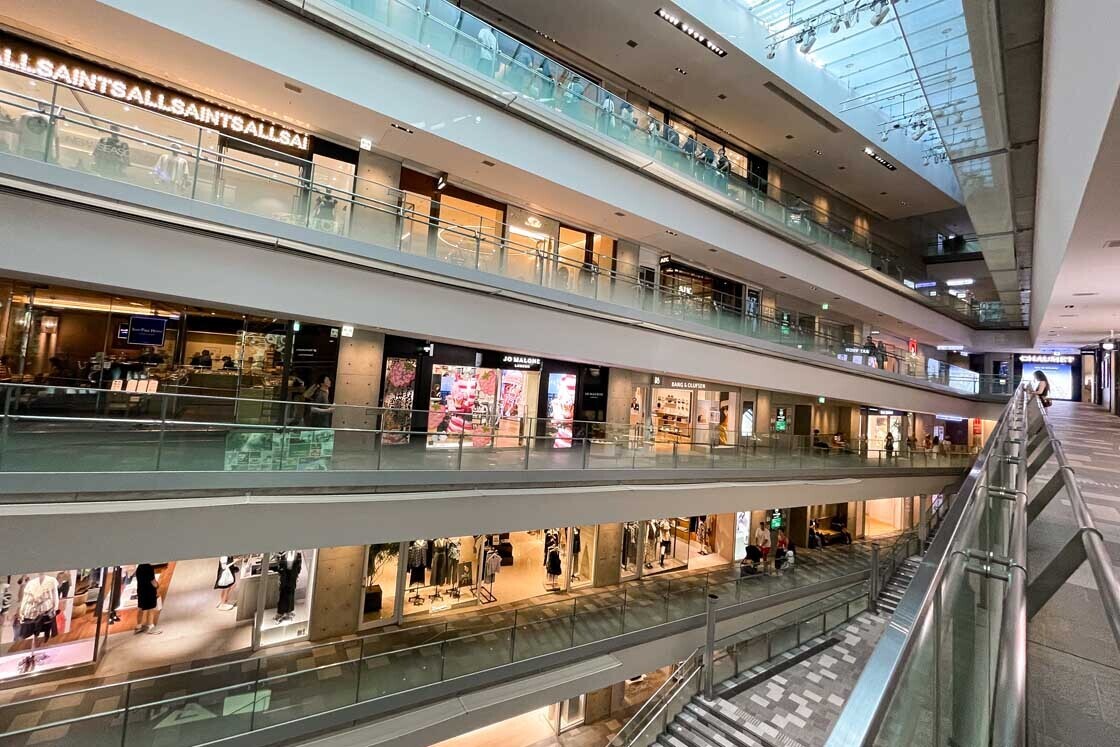
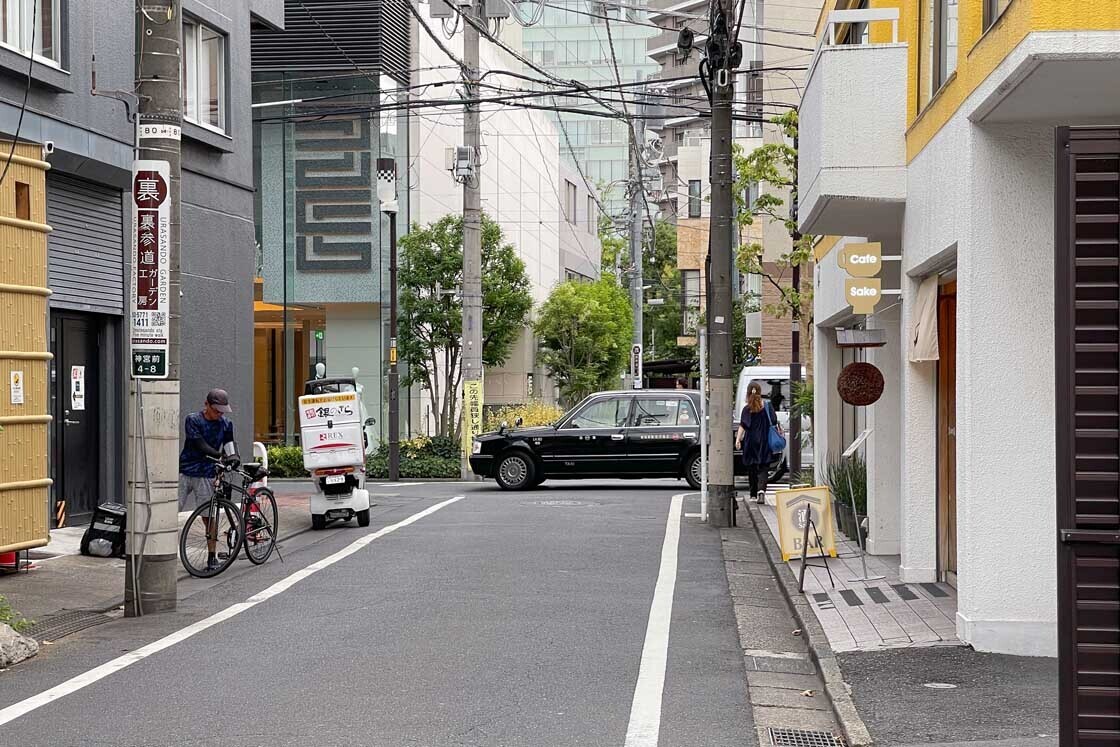
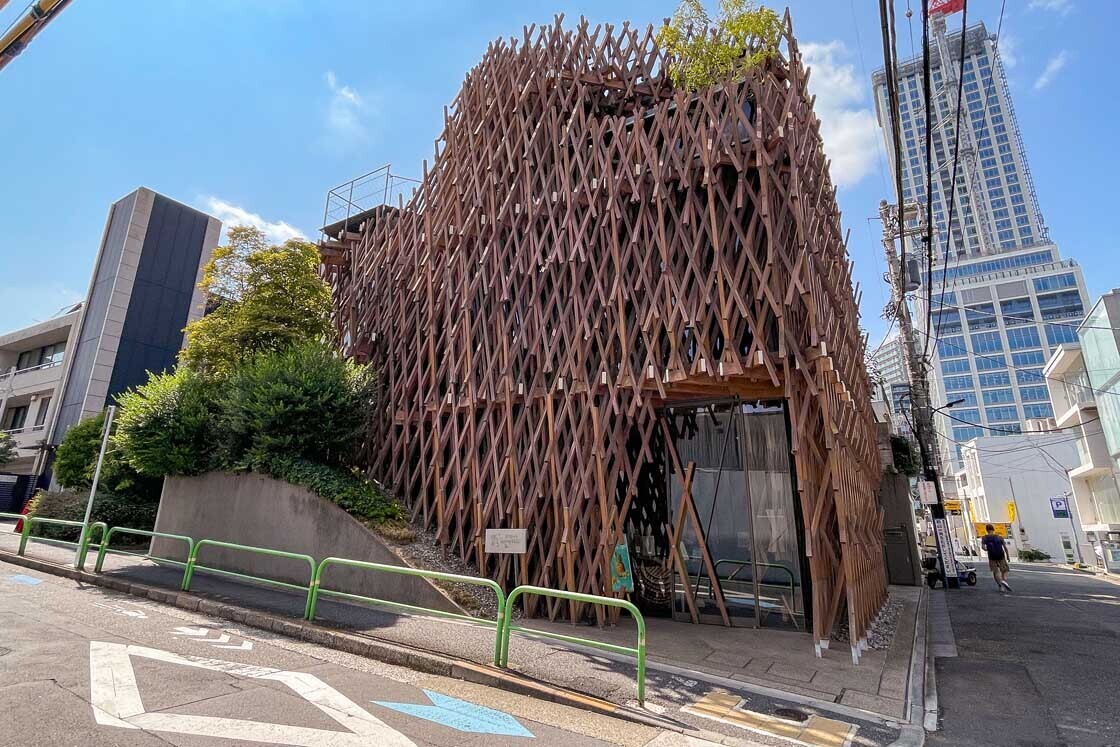
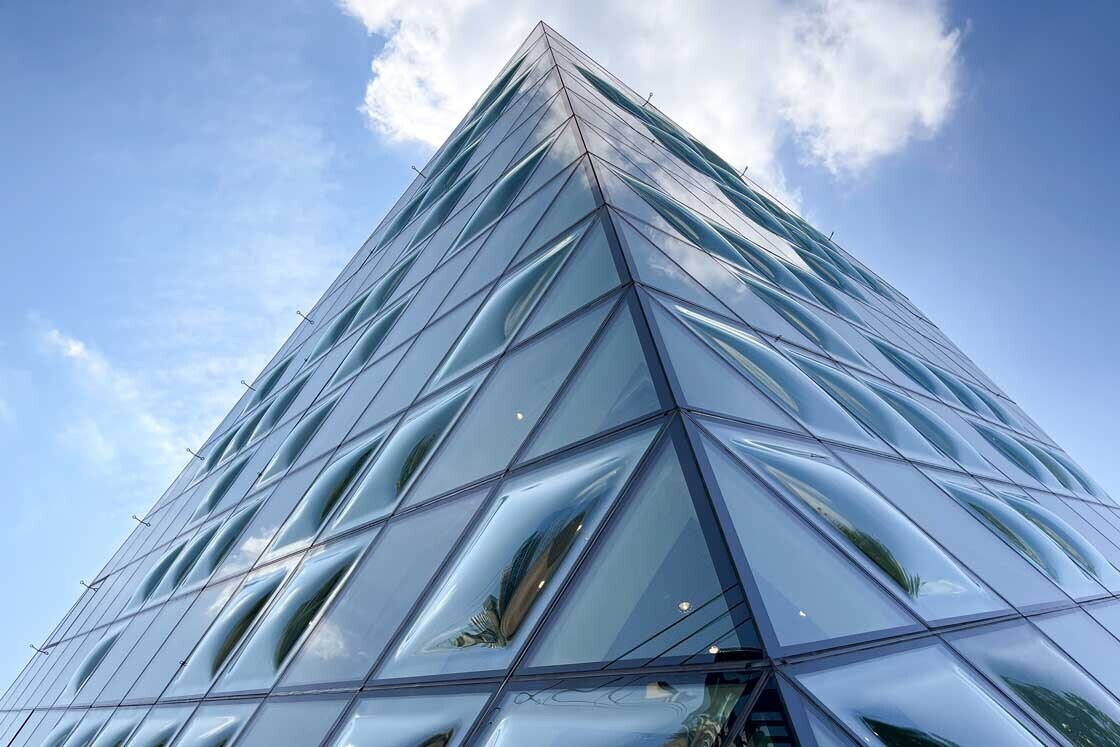
Art break at Yamatane Museum of Art
The highlight of today's walk is Yamatane Museum of Art, a museum specializing in Japanese painting. I could have stopped at a cafe in the streets of Aoyama for a break, but wanted to stick to today's theme of art and design. As it happened, there is a cafe at Yamatane Museum, and it was a natural choice for me to stop by before checking out the exhibition. My last visit to the museum was a few years ago, and I thoroughly enjoyed that experience. This time, I headed to the museum cafe first for a matcha and wagashi break to set the mood before entering into the world of Japanese painting.
Yamatane Museum of Art, like Ota Memorial Museum of Art, are museums exhibiting their private collections. The displayed artwork is rotated and temporary artwork on loan can also be seen depending on the exhibition theme. The main overarching theme at Yamatane Museum of Art is Japanese painting or nihonga, and visitors can look forward to the varied brush strokes, colors and subjects of paintings from the various artists.
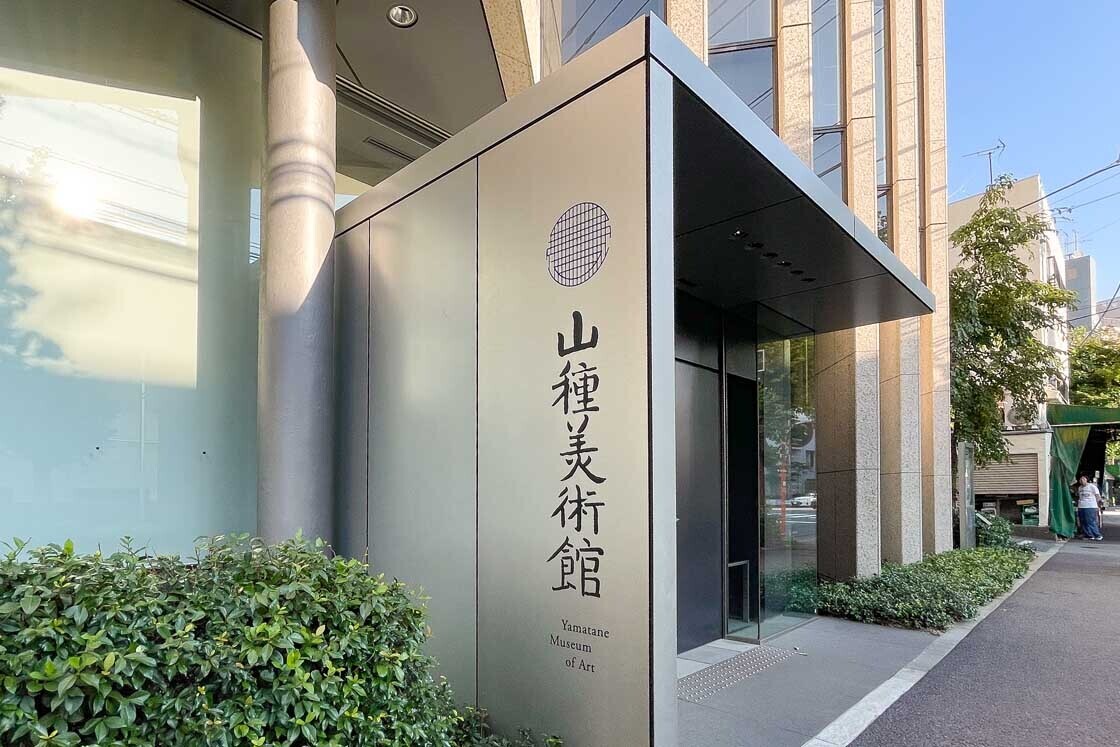
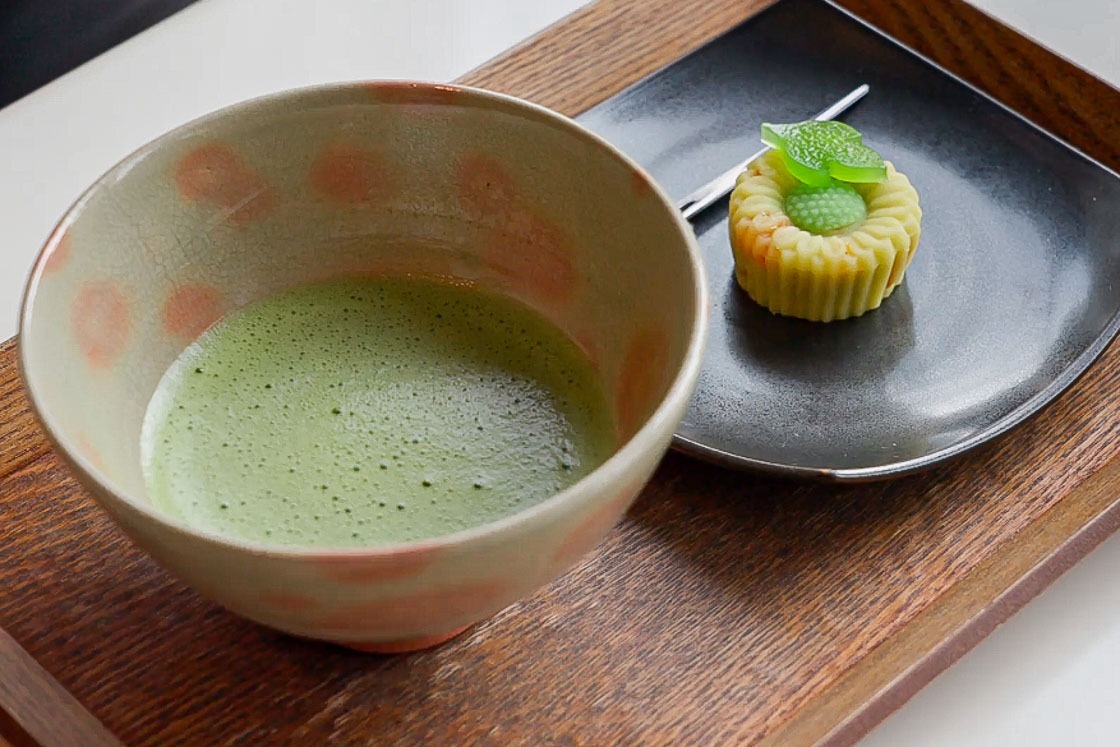
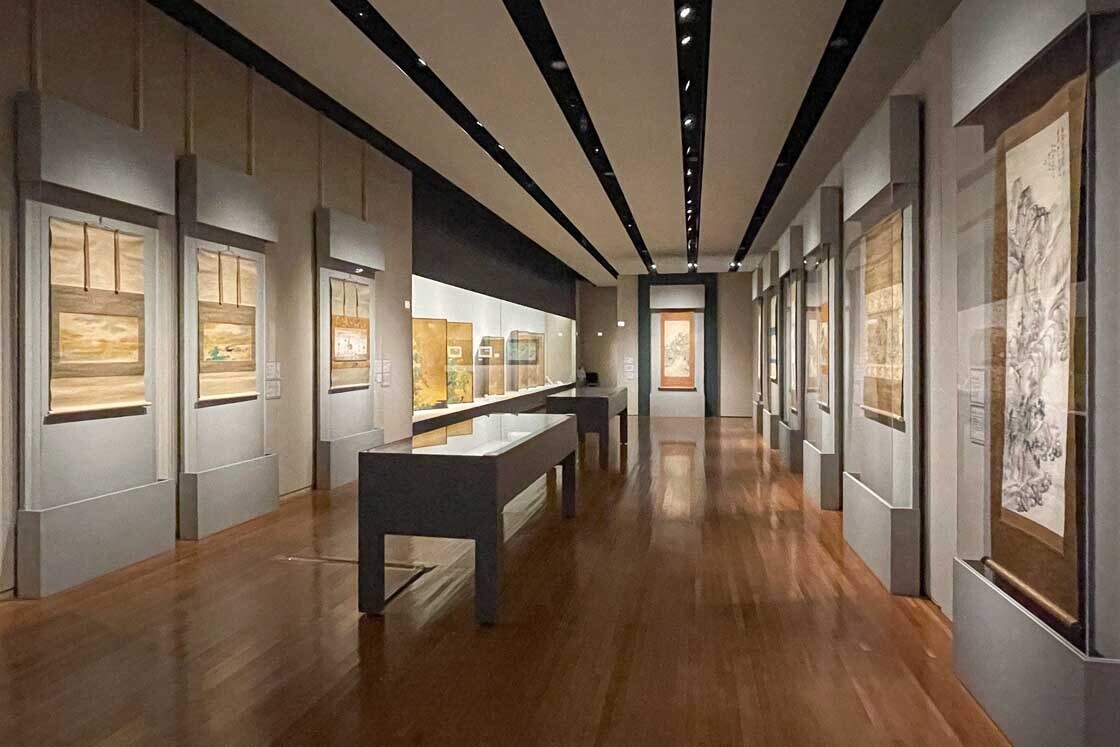
As someone who is interested in art, but not knowledgeable enough to tell which artist did what, I did not feel the need to know the current exhibition themes at the museums I visited. Knowing that I would see woodblock prints at one and Japanese painting at the other was enough for me, and the learning would come naturally while at the museums. Morever, I believe there are not many one day walking itineraries that would include two museums that take visitors on art journeys from the Edo Period to modern, contempotary Japan. So dear reader, how do you choose which museum to visit?
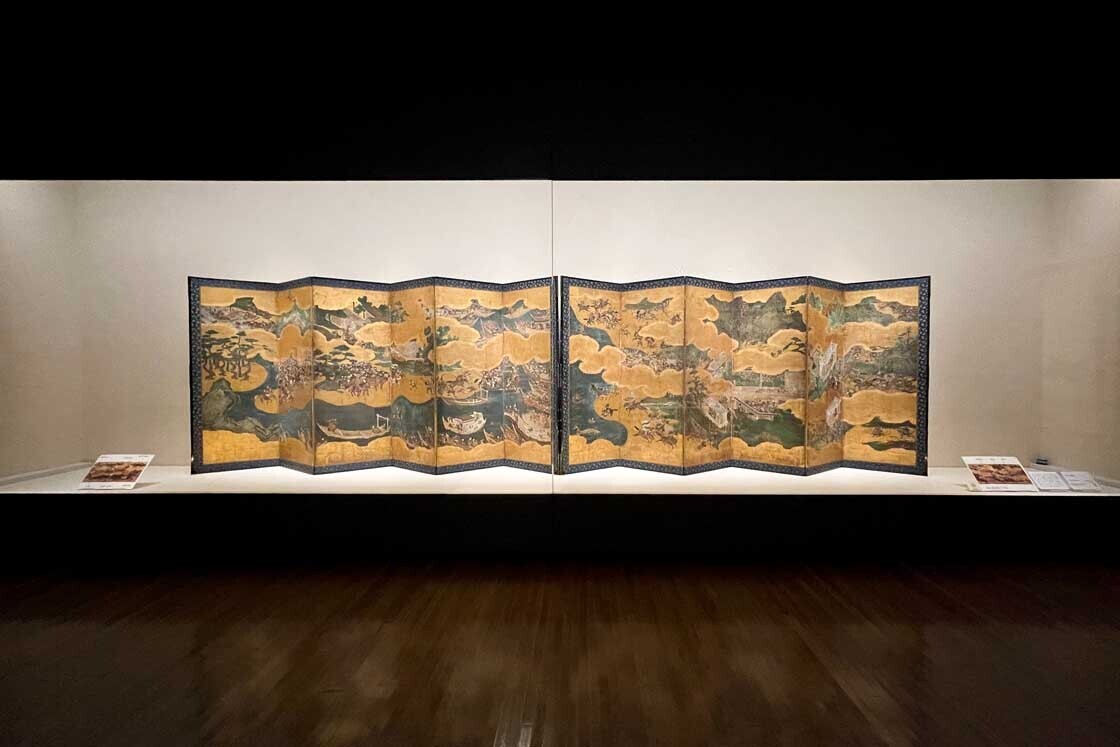
End: Yebisu Garden Place
Following that peaceful art break, I continued on my walk to Ebisu Store, a retro shopping arcade minutes from Ebisu Station. Since my day started in Harajuku, all I had seen were modern buildings and funky as well as classical art, but this shopping arcade was a serious throwback to what I imagined one would've looked like back in the 80s. I thought it was a quirky break amidst the stylish and elegant reputation often associated with the Ebisu neighbourhood.
My destination in Ebisu was Yebisu Garden Place, a modern landmark filled with everything from a BLUE NOTE PLACE jazz bar to a three-star French restaurant. I, however, made a beeline for the Yebisu Brewery Tokyo - the birthplace of Yebisu Beer and one of the first beer labels in Tokyo.
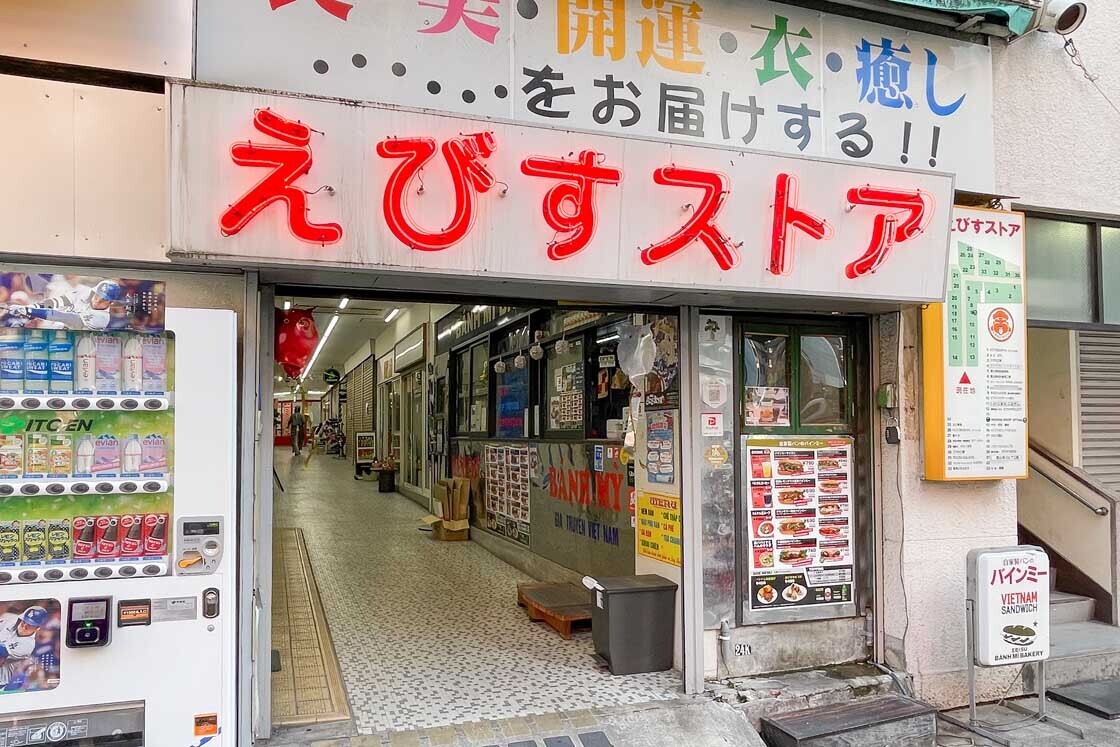
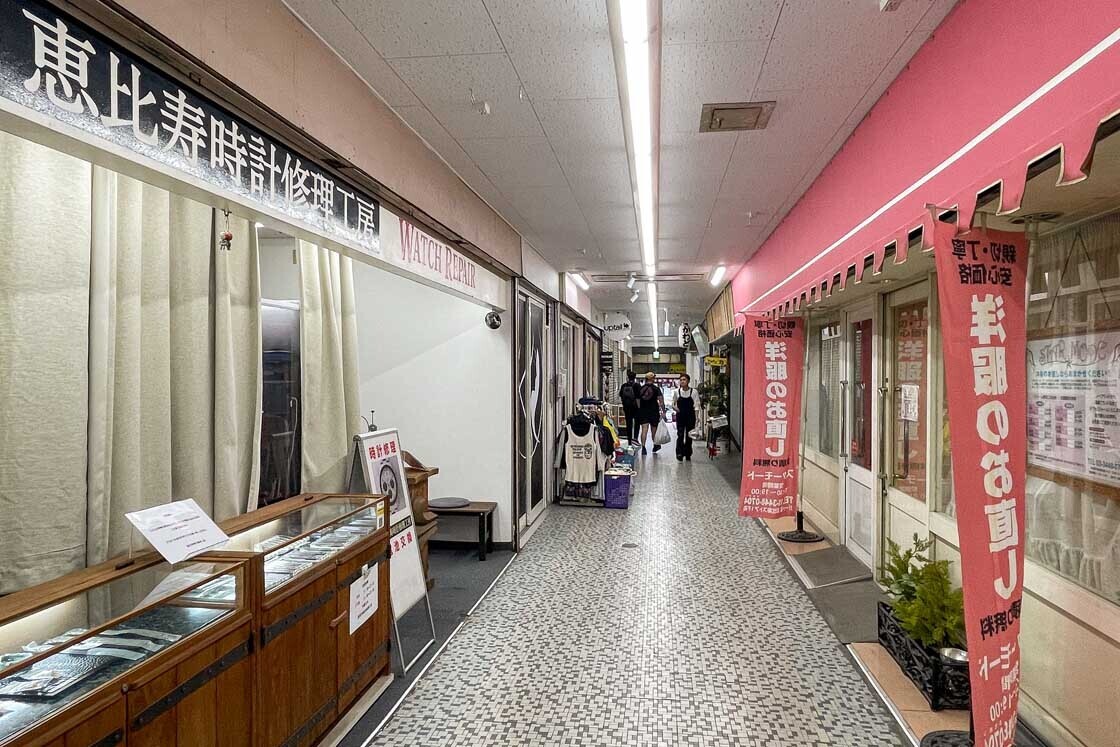
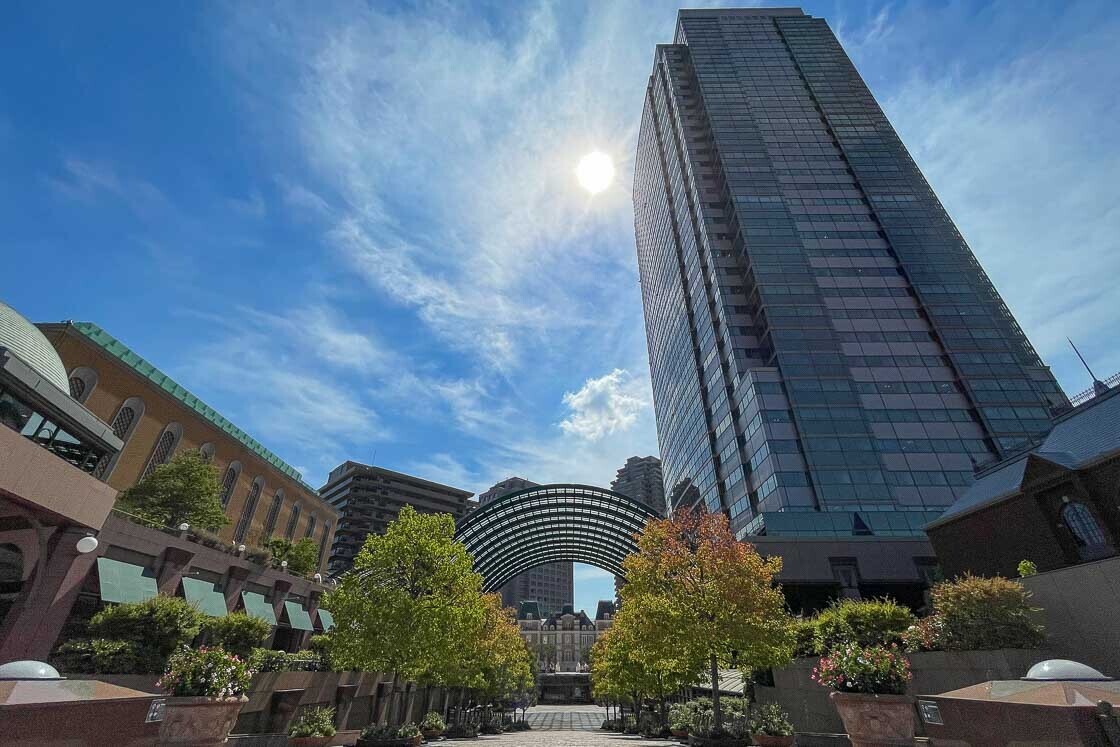
A brewery visit usually starts at the museum that displays the brand's history and its beer, then moves on to a hand-on look at the ingredients and wraps up at the taproom. I learned that Ebisu, the neighbourhood, is named after the beer, and the logo of Yebisu beer is of Ebisu, one of Japan's lucky gods. It was quite a handful to say, "I'm in Ebisu looking at Ebisu and drinking Ebisu!". The difference between Yebisu and Ebisu in simple terms is that "ye" is the old way of writing "e", but they are the same phonetically.
The taproom serves beers that are brewed on site. There are two flagship beers, Yebisu Infinity and Yebisu Infinity Black, and two other seasonal beers. I ordered a tasting flight of four beers, so that I could try them all. Spoiler alert: everything I drank was good and recommended ;)
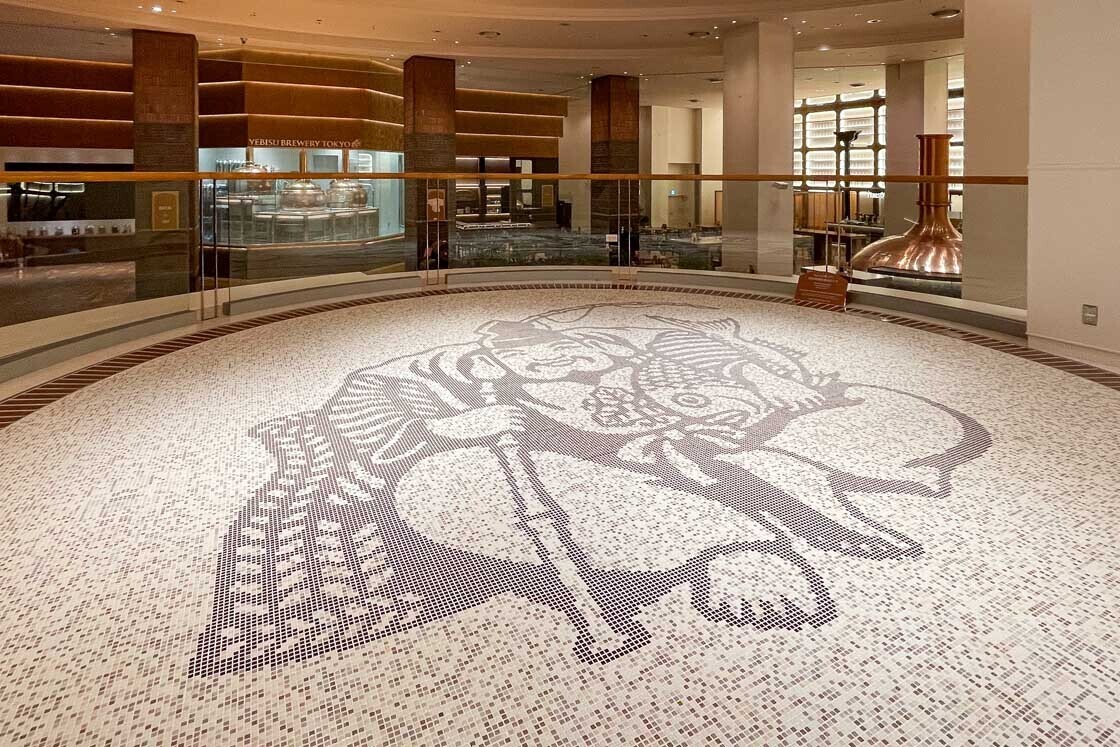
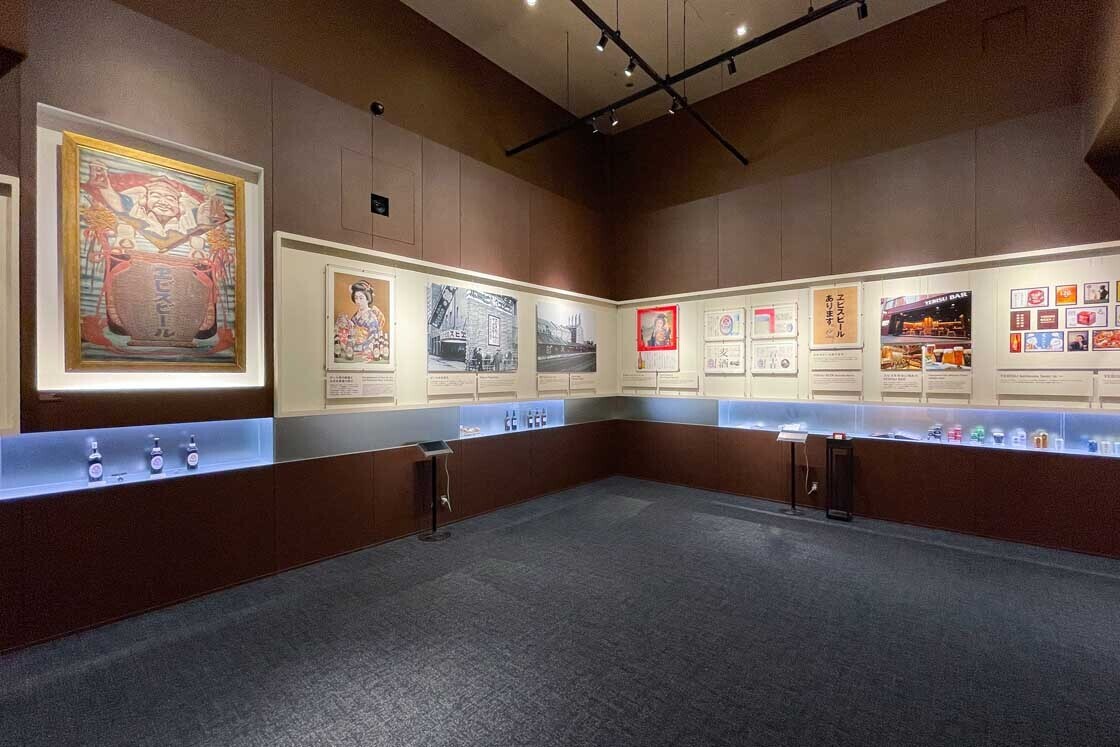
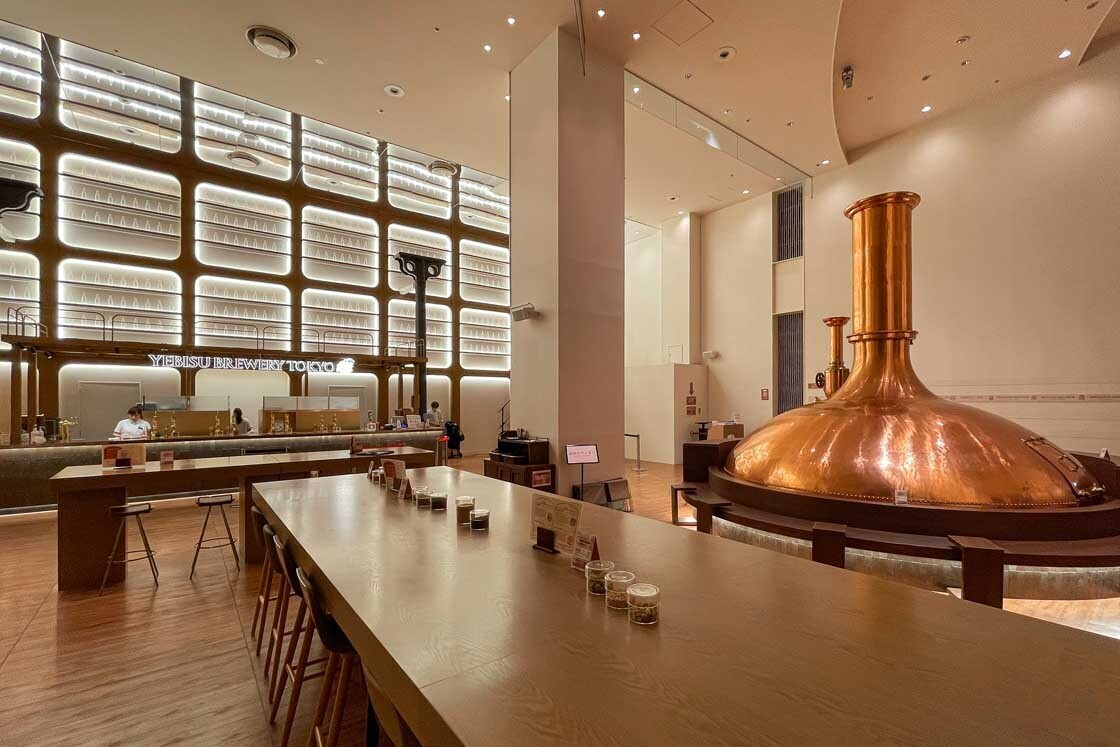
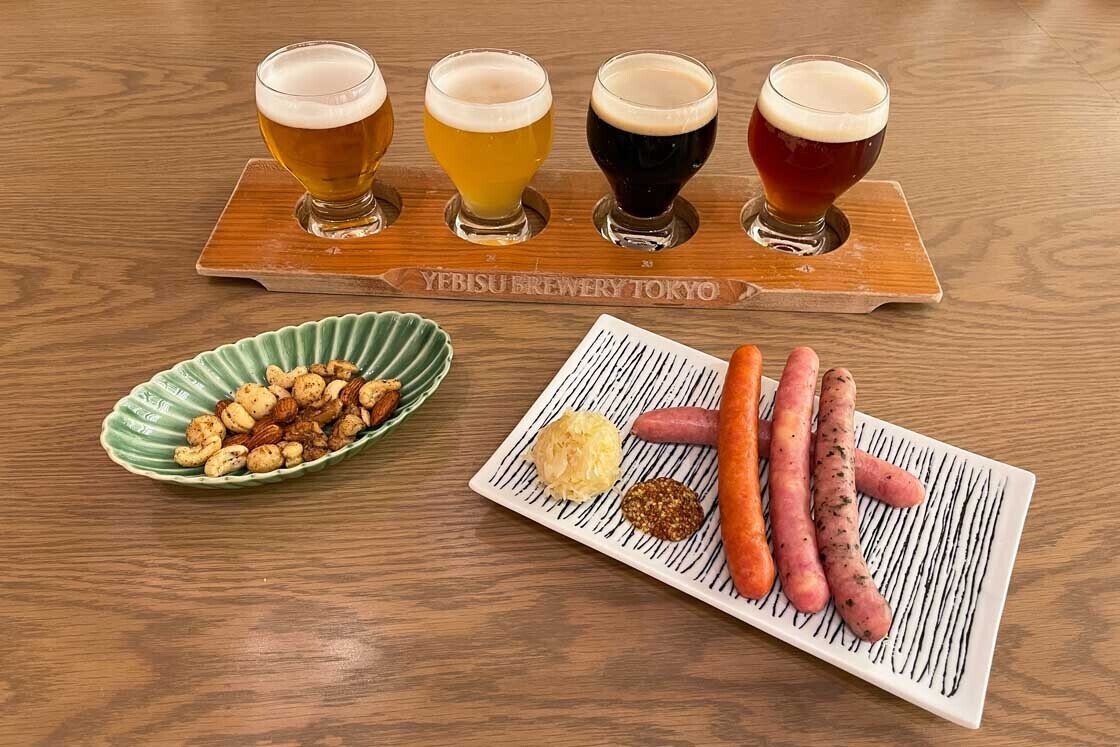
It was dusk by the time I made it out of the brewery, and I headed to the Sky Lounge on the 38th floor at Yebisu Garden Place, the final stop on my walking tour. This free, indoor observation deck is not as high or well-known compared to its neighbour Shibuya Sky, but the views are still great and visitors are protected from the elements. I was treated to a nice night view of the city with Tokyo Tower and Rainbow Bridge. I hear that Mount Fuji can be seen in the daytime when the weather is good and the skies are clear, but it was too dark when I was there.
That summed up my one day in Tokyo walking from Harajuku to Ebisu. Even though I clocked a lot of steps, my route led me to see a quieter side of Tokyo and visit some places few tourists venture. I hope this article inspires you to deviate a little from the popular tourist route, and experience and discover another side of Tokyo filled with hidden charms.
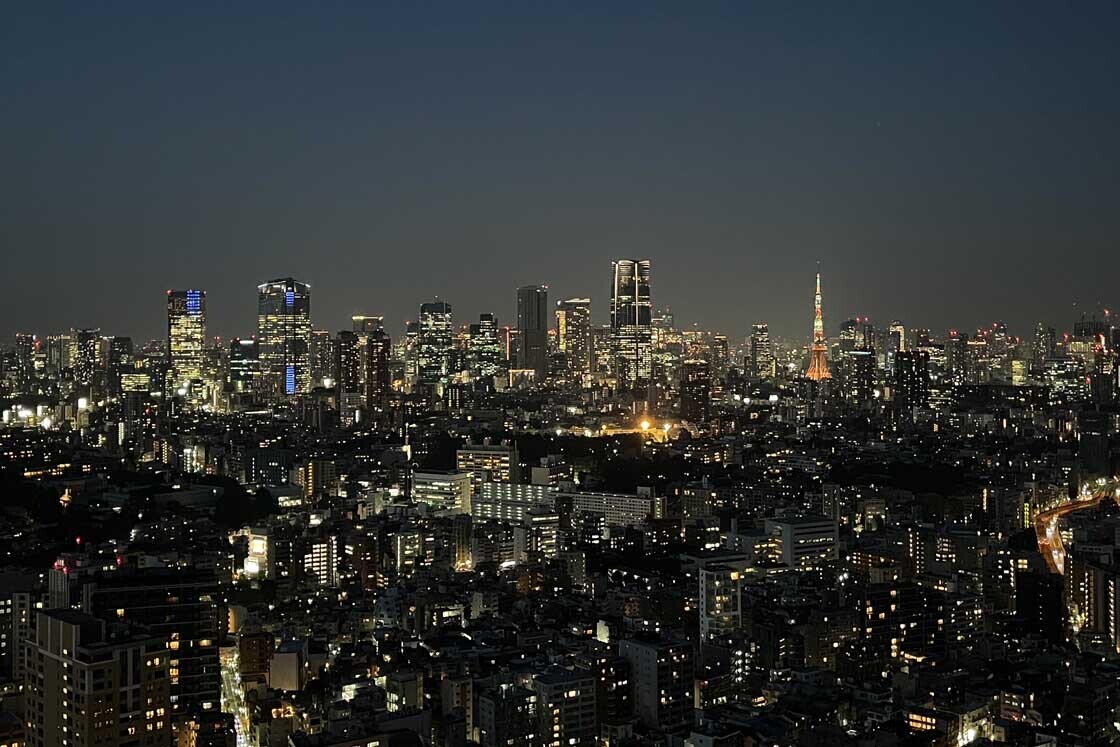
Discover more
- Yamatane Museum of Art - Official English website
- Google maps pin of Yamatane Museum of Art
- Ota Memorial Museum of Art - Official English website
- Tokyu Plaza Harajuku Harakado - Official website
- Sakura Tei - Official website of the monjayaki and okonomiyaki restaurant in Harajuku
- YEBISU BREWERY TOKYO - Official website of brewery and museum
- Sky Lounge - Official website of the observation deck on the 38th floor of Yebisu Garden Place
